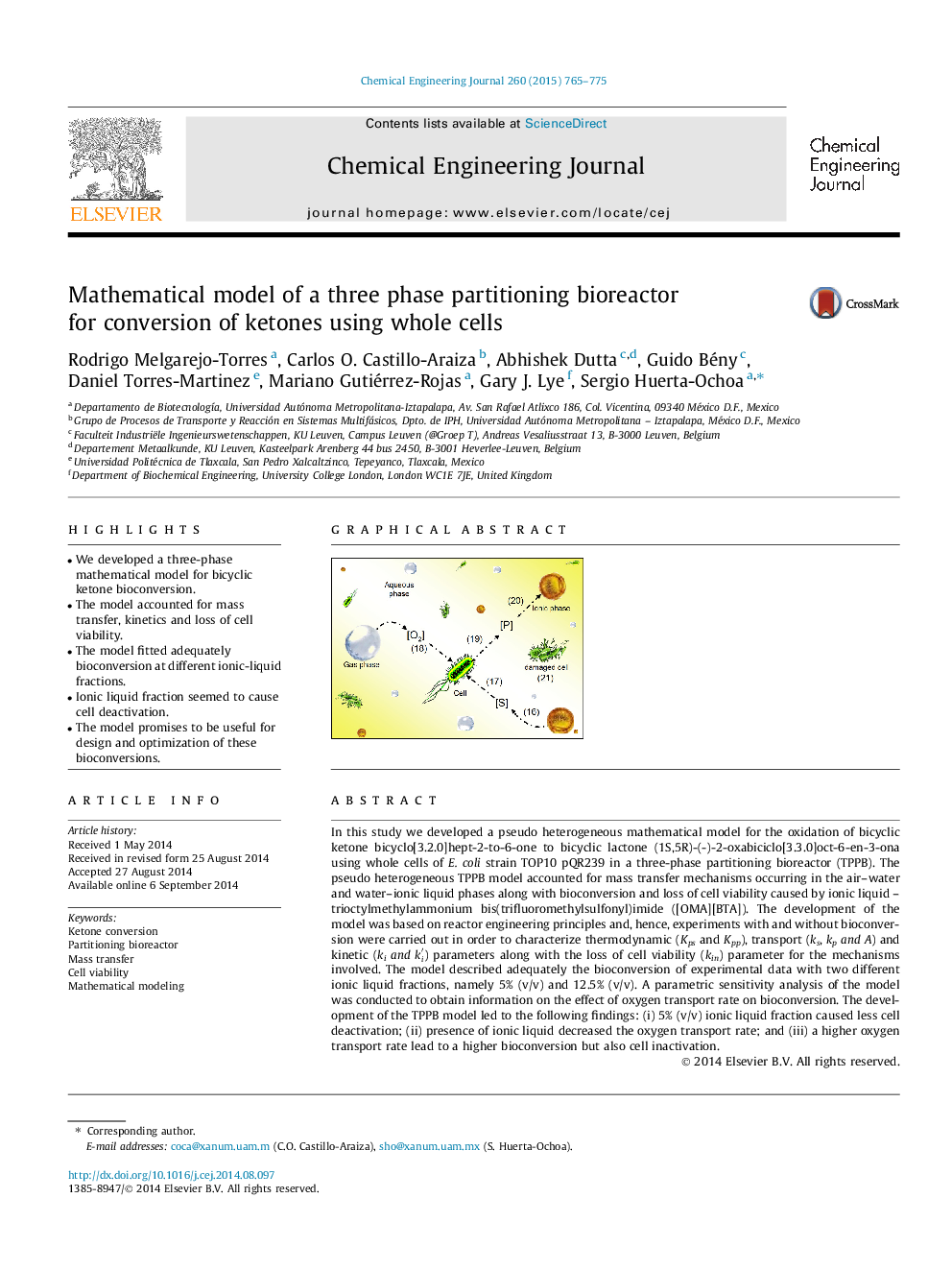| کد مقاله | کد نشریه | سال انتشار | مقاله انگلیسی | نسخه تمام متن |
|---|---|---|---|---|
| 146805 | 456378 | 2015 | 11 صفحه PDF | دانلود رایگان |
• We developed a three-phase mathematical model for bicyclic ketone bioconversion.
• The model accounted for mass transfer, kinetics and loss of cell viability.
• The model fitted adequately bioconversion at different ionic-liquid fractions.
• Ionic liquid fraction seemed to cause cell deactivation.
• The model promises to be useful for design and optimization of these bioconversions.
In this study we developed a pseudo heterogeneous mathematical model for the oxidation of bicyclic ketone bicyclo[3.2.0]hept-2-to-6-one to bicyclic lactone (1S,5R)-(-)-2-oxabiciclo[3.3.0]oct-6-en-3-ona using whole cells of E. coli strain TOP10 pQR239 in a three-phase partitioning bioreactor (TPPB). The pseudo heterogeneous TPPB model accounted for mass transfer mechanisms occurring in the air–water and water–ionic liquid phases along with bioconversion and loss of cell viability caused by ionic liquid – trioctylmethylammonium bis(trifluoromethylsulfonyl)imide ([OMA][BTA]). The development of the model was based on reactor engineering principles and, hence, experiments with and without bioconversion were carried out in order to characterize thermodynamic (Kps and Kpp), transport (ks, kp and A) and kinetic (ki and ki′) parameters along with the loss of cell viability (kin) parameter for the mechanisms involved. The model described adequately the bioconversion of experimental data with two different ionic liquid fractions, namely 5% (v/v) and 12.5% (v/v). A parametric sensitivity analysis of the model was conducted to obtain information on the effect of oxygen transport rate on bioconversion. The development of the TPPB model led to the following findings: (i) 5% (v/v) ionic liquid fraction caused less cell deactivation; (ii) presence of ionic liquid decreased the oxygen transport rate; and (iii) a higher oxygen transport rate lead to a higher bioconversion but also cell inactivation.
Figure optionsDownload as PowerPoint slide
Journal: Chemical Engineering Journal - Volume 260, 15 January 2015, Pages 765–775
